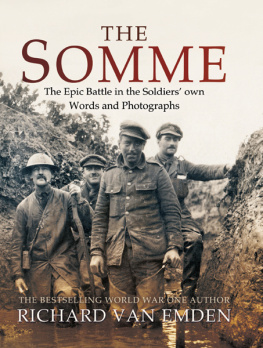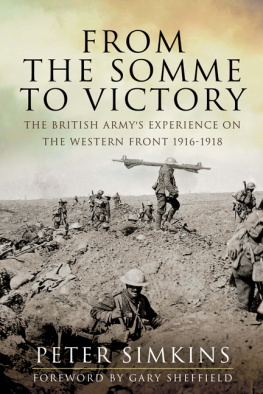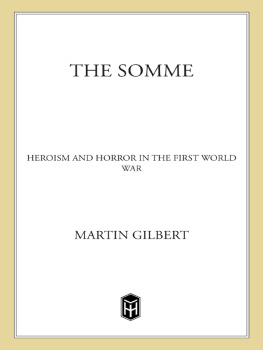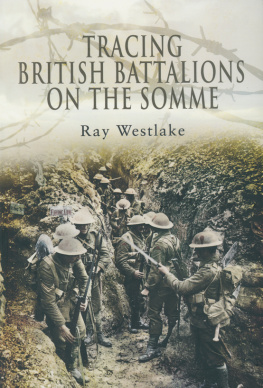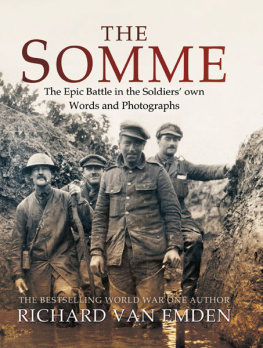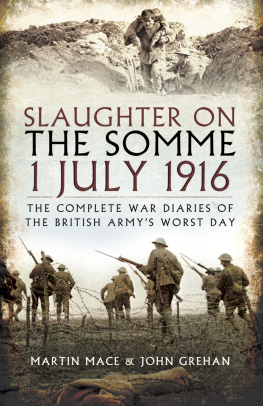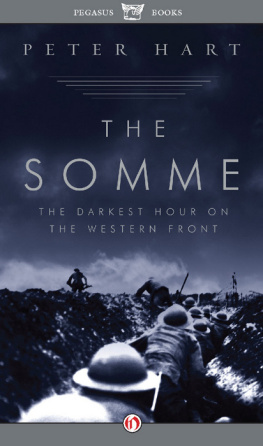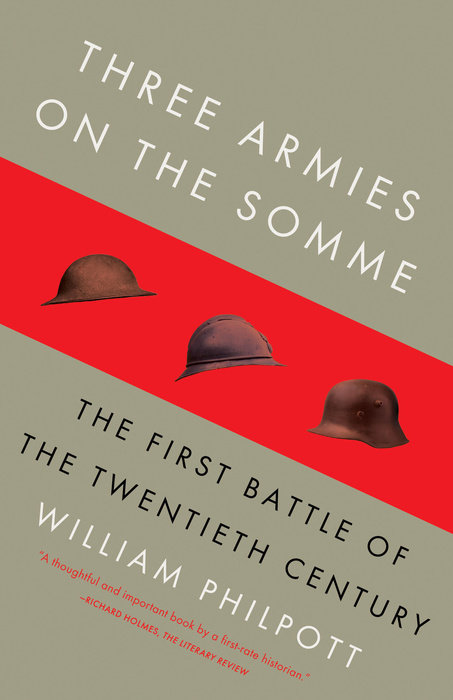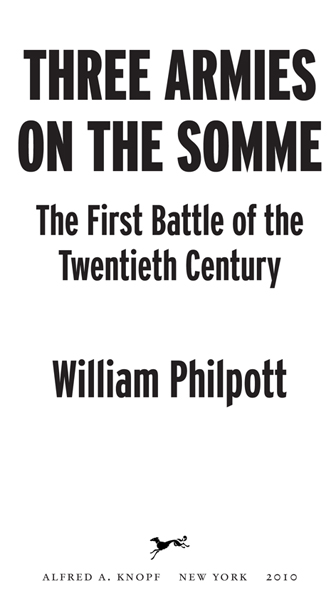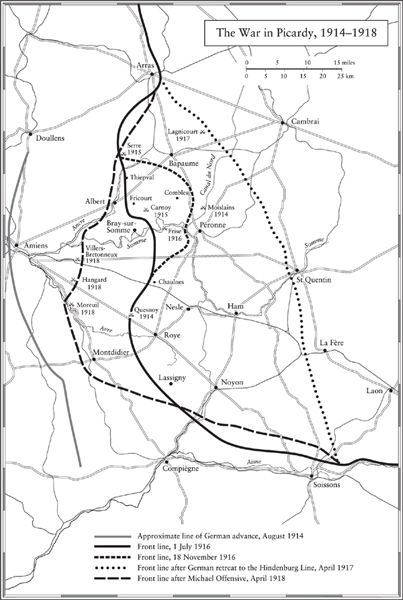William Philpott - Three Armies on the Somme: The First Battle of the Twentieth Century
Here you can read online William Philpott - Three Armies on the Somme: The First Battle of the Twentieth Century full text of the book (entire story) in english for free. Download pdf and epub, get meaning, cover and reviews about this ebook. year: 2010, publisher: Knopf Doubleday Publishing Group, genre: History. Description of the work, (preface) as well as reviews are available. Best literature library LitArk.com created for fans of good reading and offers a wide selection of genres:
Romance novel
Science fiction
Adventure
Detective
Science
History
Home and family
Prose
Art
Politics
Computer
Non-fiction
Religion
Business
Children
Humor
Choose a favorite category and find really read worthwhile books. Enjoy immersion in the world of imagination, feel the emotions of the characters or learn something new for yourself, make an fascinating discovery.

- Book:Three Armies on the Somme: The First Battle of the Twentieth Century
- Author:
- Publisher:Knopf Doubleday Publishing Group
- Genre:
- Year:2010
- Rating:3 / 5
- Favourites:Add to favourites
- Your mark:
Three Armies on the Somme: The First Battle of the Twentieth Century: summary, description and annotation
We offer to read an annotation, description, summary or preface (depends on what the author of the book "Three Armies on the Somme: The First Battle of the Twentieth Century" wrote himself). If you haven't found the necessary information about the book — write in the comments, we will try to find it.
It was the most brutal fight in a war that scarred generations. Infantrymen lined up opposite massed artillery and machine guns. Chlorine gas filled the air. The dead and dying littered the shattered earth of no mans land. Survivors were rattled with shell-shock. We remember the shedding of so much young blood and condemn the generals who sent their men to their deaths. Ever since, the Somme has been seen as a waste: even as the war continued, respected leadersWinston Churchill and David Lloyd George among themjudged the battle a pointless one.
While previous histories have documented the missteps of British command, no account has fully recognized the fact that allied generals were witnessing the spontaneous evolution of warfare even as they sent their troops over the top. With his keen insight and vast knowledge of military strategy, Philpott shows that twentieth-century war as we know it simply didnt exist before the Battle of the Somme: new technologies like the armored tank made their battlefield debut, while developments in communications lagged behind commanders needs. Attrition emerged as the only means of defeating industrialized belligerents that were mobilizing all their resources for war. At the Somme, the allied armies acquired the necessary lessons of modern warfare, without which they could never have prevailed.
An exciting, indispensable work of military history that challenges our received ideas about the Battle of the Somme, and about the very nature of war.
From Publishers Weekly
Philpott, a military historian at Kings College, London, comprehensively challenges the enduring image of the Battle of the Somme (JulyNovember 1916) as an indecisive, futile encounter in a pointless war. Instead, Philpott describes a battle that had to be fought, a war that the young men of France, the British Empire, and Germany fought for their past, present and future. The Somme was WWI s central event. Its purpose was to show the German army could be defeated--not easily, but conclusively. Chaos in the battle zone, limited Allied logistical capacity, and the fighting power of a German army at the height of its effectiveness limited the offensive s results. But Philpott s massively researched text demonstrates the battle was fought with a coherent strategic and operational plan. It came closer to breaking German resistance than myth accepts, despite the British forces inexperience and the inflexibility of its methods. As Philpott concludes, the extended attritional battle that followed was not a farrago of random improvisations but embodied structure and design. The Somme was a pyrrhic victory that nevertheless reversed the fortunes of war. 16 pages of photos; 10 maps.
Copyright Reed Business Information, a division of Reed Elsevier Inc. All rights reserved.
From Booklist
The Battle of the Somme is branded in British memory as the exemplar of WWI: a months-long cataclysm that, at the cost of monumental casualties, repelled the Germans from a few square miles of shell-blasted French countryside. This account by a descendant of an artillerist in the battle has two aims: to narrate the battle from its initial strategic concept to its sputtering-out in late 1916 and to refute historical and popular opinion about the battle. When it comes to detailing the chronology, Philpott takes second place to no historian. Retrieving some rational utility for the battle poses some difficulty, however, with Philpott striving to persuade readers that it so weakened the German army as to represent a turning point toward ultimate Allied victory. Philpott, of course, never minimizes the slaughter behind his thesis; he merely holds that Allied combatants viewed the Somme as a success, while the Germans viewed it as a setback, and that its negative reputation is an imposition on facts by other historians. Comprehensive research and convention-bucking argument qualify Philpott for the WWI shelf. --Gilbert Taylor
631 pages
Publisher: Alfred A. Knopf (5 Oct. 2010)
Language: English
ISBN-10: 0307265854
ISBN-13: 978-0307265852
William Philpott: author's other books
Who wrote Three Armies on the Somme: The First Battle of the Twentieth Century? Find out the surname, the name of the author of the book and a list of all author's works by series.

